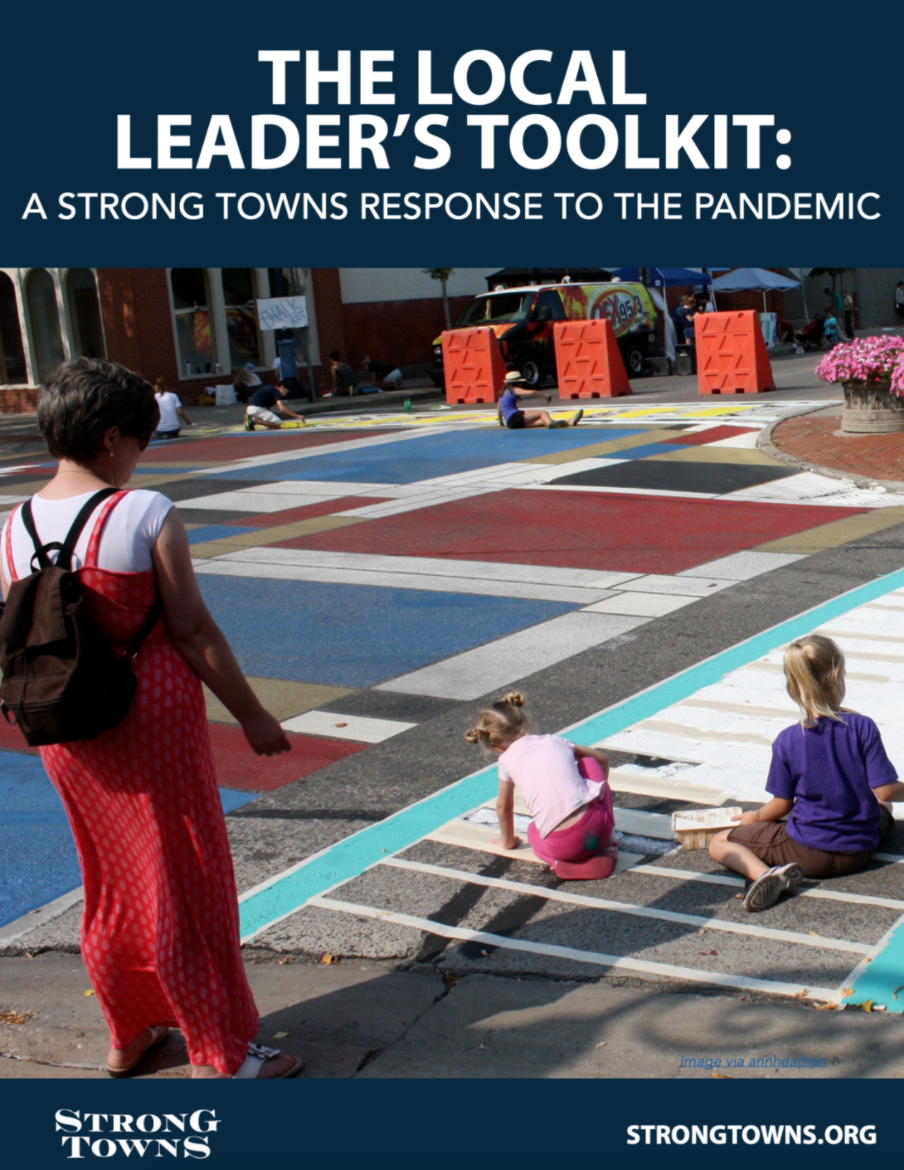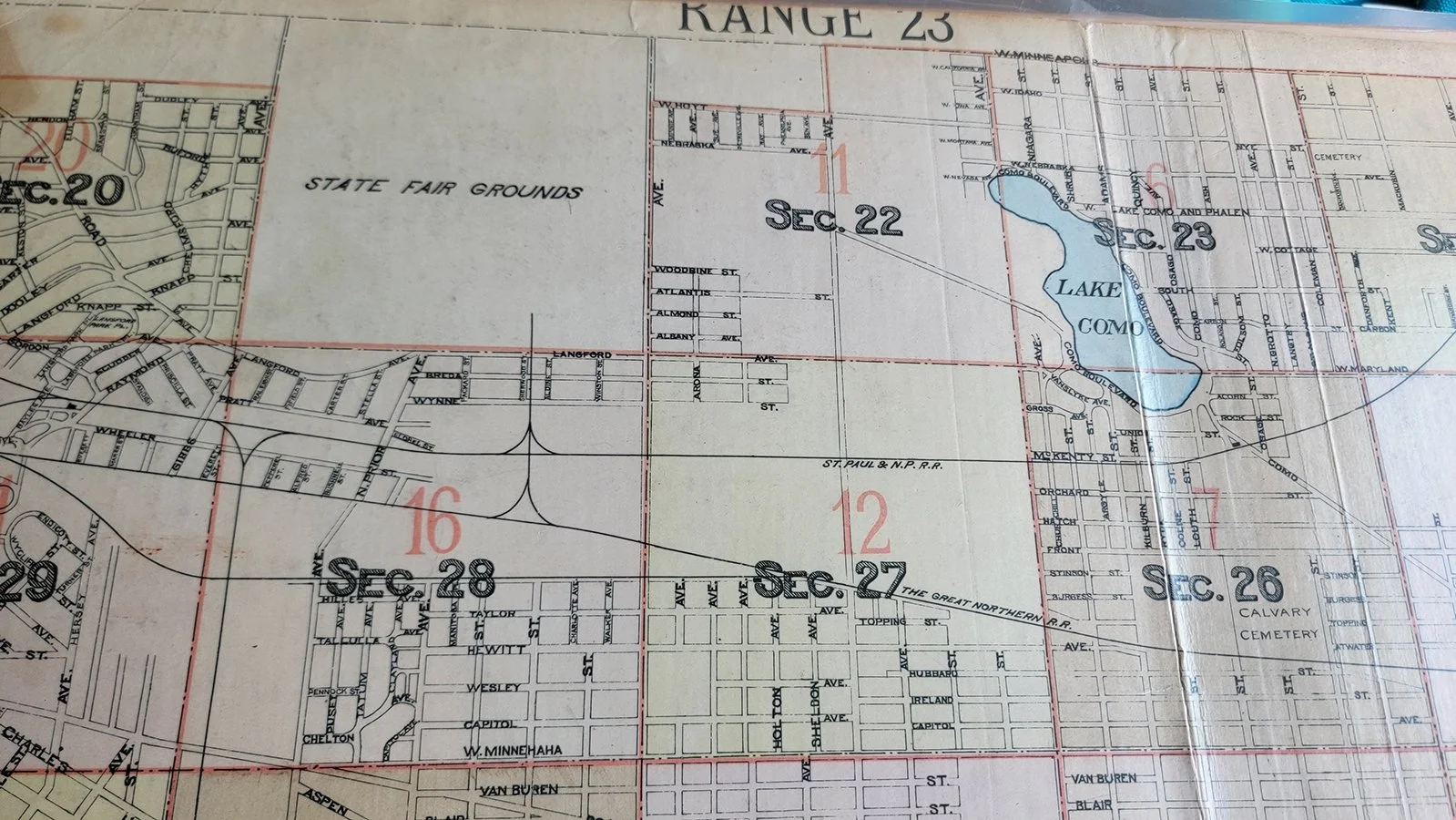How should my town be doing economic recovery right now?
Is your town using a top-down or a bottom-up response to the economic impacts of the pandemic?
When it comes to responding to this crisis of unprecedented magnitude, most of our cities reacted out of fear and confusion in the beginning—and who could really blame them? The future is still very uncertain, but at this point, local leaders have had more time to consider their responses and plan for whatever is ahead.
Have you been paying attention to your city’s economic and financial response? What have you noticed?
At Strong Towns, we know that an approach to recovery rooted in incremental action, oriented toward the needs of residents has a much greater likelihood of helping your city survive over the long run than an approach focused on large-scale efforts that come from the top down.
What’s the difference between the typical top-down approach to economic recovery and the bottom-up, Strong Towns approach? Let’s explore some key issues that impact economic vitality and contrast these responses in order to understand what’s at stake.
Photo by Shunya Koide on Unsplash.
Economic “Growth”
The Top-Down Approach: Local leaders are laser-focused on how to get back to the previous state of things where never-ending growth was the goal. They put their energy and municipal tax dollars into big potential projects that they hope might save the town from financial ruin.
The Bottom-Up Approach: Local leaders focus on how to build a financially resilient town that adapts to challenges, including the present ones. Leaders recognize that pursuing endless growth is a risky exercise and work instead toward a goal of strength and stability.
State and Federal Funding
The Top-Down Approach: Local governments quickly jump on opportunities for federal and state funding in the hopes of fast job creation and economic salvation.
The Bottom-Up Approach: Local governments carefully consider any chance for federal and state funding. Funding is only pursued after a full accounting is undertaken to assess the long-term costs (especially maintenance) and it is determined that the city can afford them, with everyone benefiting from the investment.
Zoning and Business Regulations
The Top-Down Approach: Lengthy bureaucratic processes are required in order to make even the smallest of zoning changes. Regulations around what sort of housing options, food production and business activities can occur in residential neighborhoods are maintained and gripped onto.
The Bottom-Up Approach: Zoning restrictions are loosened quickly to allow for outside retail, dining and other current economic needs. Home occupancy restrictions and rules about local food production are relaxed, parking minimums are eliminated, and neighborhood business creation is permitted and encouraged.
Photo by Shunya Koide on Unsplash
Public Space
The Top-Down Approach: Government leaders restrict the use of public spaces out of fear that people will use them to gather. Law enforcement officers are deployed to check for illegal street use, issue fines and clamp down on street activity that doesn’t conform to standard regulations.
The Bottom-Up Approach: Streets are allowed to become public spaces for safe walking, biking and playing. Neighbors are free to put out chairs, tables and other items that will enable them to safely interact outdoors in a socially-distanced manner. Government leaders allow this process to happen organically and reevaluate street design in response.
Decision Making
The Top-Down Approach: Local leaders look to federal and state policies to determine all their decisions and hope for easy cookie-cutter solutions to their problems. The focus is on addressing the concerns of the loudest citizens with the most power and responding to issues in wealthier neighborhoods first.
The Bottom-Up Approach: Local government leaders connect with residents, business owners, faith leaders, and other community voices on a frequent basis to listen to their needs and respond quickly in whatever way they can, recognizing that the best solutions with come from the people who live in the community, not those outside. Local leaders devote themselves to getting to know their residents and listening to everyone’s concerns, with an awareness that such a process takes time and effort.
Choose the first approach and you may watch local businesses disintegrate, residents move away and tax dollars for services dwindle, all while you wait for a miraculous infusion of cash or good ideas from the federal government.
Choose the second approach and your town can find ways to adapt to the current situation—allowing businesses to survive, helping residents to maintain a decent quality of life, and moving the city to a place of financial solvency that lasts for the long haul.
The Bottom-Up Path to Prosperity
It is local leaders like you—not those in distant capitol buildings—who will guide towns and cities into a more prosperous future. And the Strong Towns movement stands with you.
Our new free ebook, The Local Leader’s Toolkit, provides a detailed step-by-step guide on how to help guide your city to recovery.







It’s natural to feel grief when local officials ignore calls to make your city a stronger and safer place. But while the grief is real, the changes your advocacy inspires are real too.